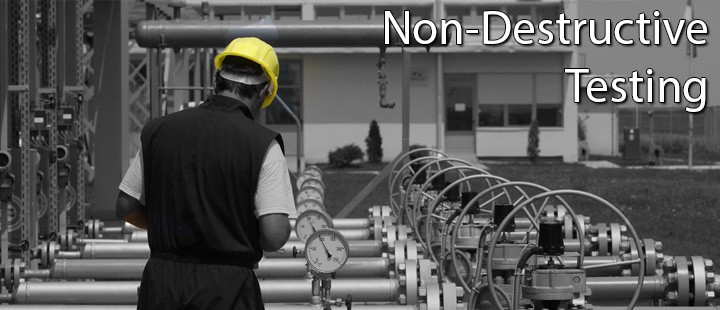- 85 plus years of experience
- Superior test systems
- Knowledgeable fieldstaff
- In or off-line NDT equipment
|
- Eddy current
- Ultrasonic
- Flux leakage
- Custom systems
- Material Handling
|
|
|
|
|
|
|
Factors Influencing Test Methods |
|
|
|
|
 Some weldline cracks, such as this one shown above, may be detected by both eddy current and ultrasonic equipment. Some weldline cracks, such as this one shown above, may be detected by both eddy current and ultrasonic equipment. |
|
 Factors that influence system selection include the capabilities and limitations of each technology, as well as the diameter, wall thickness, tube condition, and throughput speed of the product under test. Where the test is applied in the manufacturing cycle also influences the choice of method and apparatus. This can range from tests limited to the heat affected zone on the weld mill with perhaps an in-line anneal, to full body inspection of cut lengths after drawing and annealing or other heat treating. Each test method has inherent capabilities and limitations that are different. Factors that influence system selection include the capabilities and limitations of each technology, as well as the diameter, wall thickness, tube condition, and throughput speed of the product under test. Where the test is applied in the manufacturing cycle also influences the choice of method and apparatus. This can range from tests limited to the heat affected zone on the weld mill with perhaps an in-line anneal, to full body inspection of cut lengths after drawing and annealing or other heat treating. Each test method has inherent capabilities and limitations that are different. |
|
|
|
|
|
|
 |
Common Defects Detected |
|
|
Generally, for tube applications that require high throughput speeds, eddy current is the preferred method to detect small, short, incomplete welds,and some subsurface cracks in carbon steel or non ferrous tube. For full body tests, including the detection of long, continuous defects such as incomplete seam welds in tube, and inclusions, voids or cavities, ultrasonic test systems are recommended. Flux leakage systems are available to accurately detect longitudinal and transverse surface defects on the OD and ID of heavy-wall magnetic tubing.
|
|
|
The picture above shows a short pinhole flaw that was detected by eddy current, but was difficult to detect using ultrasonic tests. |
|
|
|
|
 |
Weld Types |
|
|
The process of ERW and Induction welding is preferred for most carbon and alloy steel. Defects that may arise include all of those previously mentioned. TIG welding is a slow process usually used for stainless steel or titanium. Incomplete ID weld defects are a common concern in this process. Laser welding is a much faster process used for stainless steel, titanium, duplex and nickel alloys. Typical defects include very short pinholes, and long continuous ID defects such as incomplete or miss-match welds.
|
|
This picture above shows a cross section of a tube wall with a long, continuous poor ID weld that was detected by ultrasonic methods, but not by eddy current. |
|
|
DOWNLOAD PDF |
|
 Some weldline cracks, such as this one shown above, may be detected by both eddy current and ultrasonic equipment.
Some weldline cracks, such as this one shown above, may be detected by both eddy current and ultrasonic equipment. Factors that influence system selection include the capabilities and limitations of each technology, as well as the diameter, wall thickness, tube condition, and throughput speed of the product under test. Where the test is applied in the manufacturing cycle also influences the choice of method and apparatus. This can range from tests limited to the heat affected zone on the weld mill with perhaps an in-line anneal, to full body inspection of cut lengths after drawing and annealing or other heat treating. Each test method has inherent capabilities and limitations that are different.
Factors that influence system selection include the capabilities and limitations of each technology, as well as the diameter, wall thickness, tube condition, and throughput speed of the product under test. Where the test is applied in the manufacturing cycle also influences the choice of method and apparatus. This can range from tests limited to the heat affected zone on the weld mill with perhaps an in-line anneal, to full body inspection of cut lengths after drawing and annealing or other heat treating. Each test method has inherent capabilities and limitations that are different.

